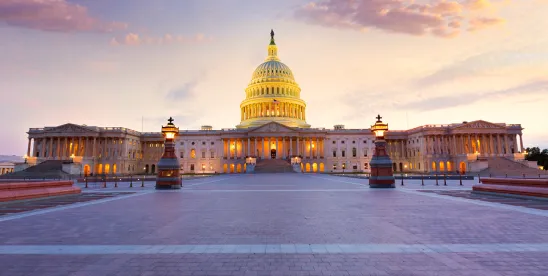On June 30, 2016, the US Senate Committee on Finance (Committee) released a white paper titled Why Stark, Why Now? Suggestions to Improve the Stark Law to Encourage Innovative Payment Models, that addressed suggestions for reform of the federal physician self-referral or Stark law (the Stark Law) (42 U.S.C. § 1395nn). The white paper summarizes comments and recommendations gathered during a roundtable discussion held by the Senate Finance Committee and the US House Committee on Ways and Means in December 2015 as well as written comments submitted by roundtable participants and other stakeholders on topics taken up by the roundtable in the weeks following the meeting. The stated purpose of the roundtable discussion and written comments was to gather perspectives on an array of “known issues” including the current Stark Law environment, implications of the Stark Law for health care reform implementation, costs associated with compliance and disclosures, possible fixes under both fee for service (FFS) and alternative payment models, and CMS’s limited authority to create exceptions and to issue advisory opinions. Stakeholders were asked to focus their written comments on (1) changes to the Stark law needed to implement health care reform, specifically the alternative payment models (APMs) contemplated by the Medicare Access and CHIP Reauthorization Act of 2015 (MACRA), and (2) the distinction between technical and substantive Stark Law violations.
Senate Finance Committee Chairman Senator Orrin Hatch commented in a press release that “[t]he health care industry has changed significantly since Stark was first implemented, and while the original goals of the Stark law were appropriate, today it is presenting a real burden for hospitals and doctors trying to find new ways to provide high quality care while reducing costs as they work to implement recent health care reforms. . . [The] paper reflects critical feedback from the stakeholder community on the law’s ambiguities, its unintended consequences and the need for reform, and I am hopeful it jumpstarts the discussion on how Congress can modernize the law to make it work for patients, providers, and taxpayers.” Provided below is a summary of the recommendations and comments received during the process and reported in the white paper, which presents many variations on the themes outlined below.
Identifying a Need for Reform
While the bulk of the white paper is a recitation of the recommendations expressed during the roundtable and written comments, the Committee provides valuable context regarding the Stark Law’s background and the current need for reform. The impetus for change comes both from the current complexity of the Stark Law and the changing reimbursement landscape. The Committee notes that while “Congress intended the Stark law to provide a bright line test to curb physician self-referral. . . the Stark law’s breadth, complexity, and impenetrability have created a minefield for the health care industry.” Additionally, the Committee notes that the Stark Law has become “unnecessary for, and a significant impediment to value-based payment models.” Specifically, while Congress has implemented some revisions to the Stark Law to facilitate APMs (e.g., providing the ability for HHS to issue regulatory waivers from the Stark Law for certain innovative payment and service delivery models under the Affordable Care Act), the Stark Law “continues to pose significant risks for implementation of such programs. Importantly, commenters noted, Medicare waivers do not clearly protect all alternative payment models under MACRA or with commercial payers, undercutting hospitals’ ability to provide uniform and consistent incentives for physicians across all patient populations.”
Supporting Alternative Payment Models
Commenters proposed a range of approaches that Congress and CMS may take to support health care reforms that implement APMs and were asked to also provide suggestions that would work in a FFS payment environment as well.
Some commenters advocated repealing all or part of the Stark Law. Others advocated only the repeal of the law’s application to compensation arrangements or otherwise modifying how the Stark Law treats compensation arrangements. Recommendations included changing the fair market value requirement for compensation arrangements to accommodate APMs and the adoption of a special rule that would deem compensation arrangements promoting MACRA-based APMs to be fair market value and not take into account the volume or value of referrals, both key elements of the law’s personal services exception. (42 USCS § 1395nn(e)(3) and 42 C.F.R. § 411.357(d).)
Comments also focused on the modification or expansion of existing waivers and exceptions to the Stark Law or creation of new waivers and exceptions, including the following: (1) implementation of new waivers contingent on satisfying risk assumption and/or other criteria; (2) expansion of the current Medicare Shared Savings Program (MSSP) waivers to qualifying APMs or the creation of new exceptions to accommodate financial arrangements with physicians that involve risk-sharing and gainsharing; (3) granting CMS express authority to create broader waivers, exceptions and advisory opinions than it is currently authorized by law; (4) creation of a new statutory exception for APMs or the creation of a new exception that is modeled on or expands the current Stark Law exception for referrals for services to Medicare prepaid plan enrollees; (5) expansion of the regulatory risk-sharing exception at 42 C.F.R. § 411.357(n) to apply to Medicare and Medicaid FFS programs or creation of a new broader risk-sharing exception; (6) synchronization of the Stark Law with the Civil Monetary Penalties (CMP) law, as amended by MACRA, to clearly accommodate properly structured gainsharing arrangements; (7) expanding CMS’s special “volume or value” rule permitting unit-based compensation to permit percentage of savings payments to physicians, and create a presumption that such compensation is fair market value.
Distinguishing Technical Violations and Determining Penalties
The Committee noted that the commenters generally agreed that “technical” violations of the Stark Law should be subject to a separate set of sanctions that would not give rise to either FCA exposure or “potentially ruinous” repayment liability. Certain commenters noted that Congress already recognized the disparity between technical and substantive violations when it created the Self-Referral Disclosure Protocol (SRDP), and recommended that technical violations be addressed with civil monetary penalties. Written comments addressed how technical violations could be distinguished from substantive violations, the need for redefinition of certain key terms to clarify current exceptions and factors for determining a penalty for technical noncompliance.
Written comments suggested that technical violations of the Stark Law could be distinguished from substantive violations by the one of the following approaches: (1) treating violations involving the form of an arrangement, such as the failure to satisfy the signed writing requirement of many Stark exceptions, as technical violations; (2) treating the failure to satisfy the fair market value, “volume or value,” and/or commercial reasonableness prongs of an exception as substantive violations; (3) only treating compensation arrangements that violate the federal anti-kickback statute as substantive violations; and (4) creating bright line requirements that would improve clarity and establish the baseline for compliant conduct and treat noncompliance with the bright line requirements as substantive violations. One recommendation was to create an exception for technical noncompliance “based on the regulatory exception for certain arrangements involving temporary noncompliance at 42 C.F.R. § 411.353(f), but with fewer restrictions.” Finally, commenters called for clarification of the definitions of key terms, i.e., fair market value, “takes into account” the “volume or value” of referrals, and commercially reasonable.
Other comments recommended the consideration of mitigating factors when determining the penalties associated with technical violations, giving the Secretary of HHS the authority to reduce penalties based on one or more of the following:
(1) whether the violation is technical or substantive; (2) whether the parties’ failure to meet all of the prescribed criteria of an applicable exception was due to an innocent or unintentional mistake; (3) the corrective action taken by the parties; (4) whether the services provided were reasonable and medically necessary; (5) whether access to a physician’s services was required in an emergency situation; and (6) whether the Medicare program suffered any harm beyond the statutory disallowance.
Other Considerations
The white paper also summarizes a handful of other frustrations with the Stark Law and suggestions for addressing them. These include: (1) aligning the Stark Law’s exceptions with the federal anti-kickback statute safe harbors; (2) creating a special compensation exception for tax-exempt entities in recognition that their compensation arrangements are already regulated by the Internal Revenue Service; (3) reversing the Stark Law burdens of proof, creating a presumption that compensation arrangements with referring physicians are fair market value, not determined in a manner that takes into account the volume or value referrals, and on commercially reasonable terms; and (4) streamlining and simplification of the Stark Law’s key define terms and its exceptions.
Senator Hatch announced shortly after publication of the white paper that the Committee would hold a hearing to “examine ways to improve and reform the Stark Law.” That hearing was held on July 12, 2016. McDermott will continue to follow these Stark Law reform developments, and report on them in future communications.




 />i
/>i

